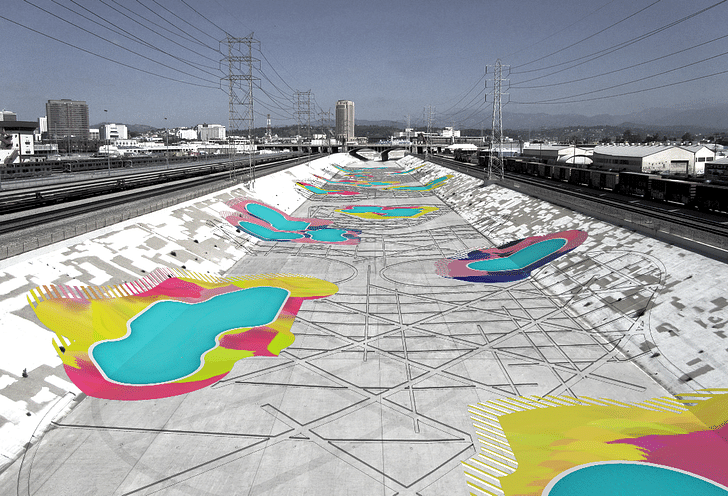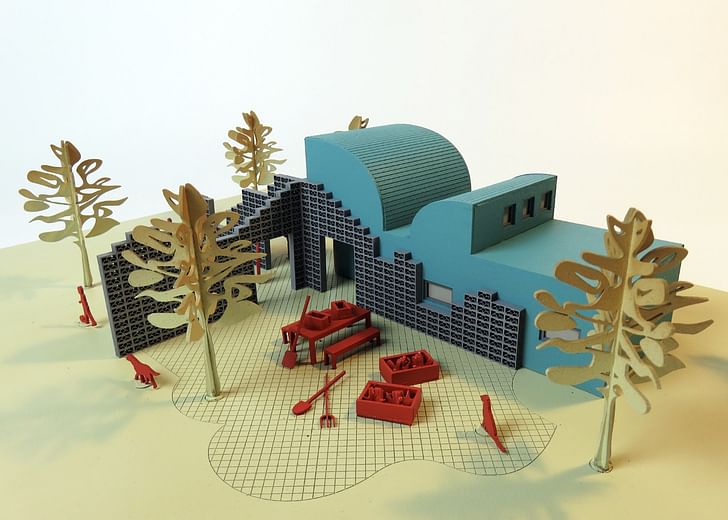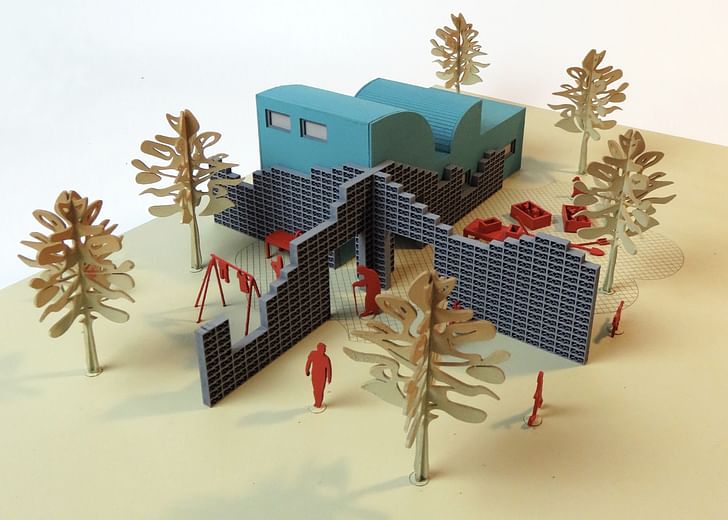

Florencia Pita and Jackilin Hah Bloom started their practice back in 2010 after working together for several years at SCI-Arc and Greg Lynn's Form. Their firm, Pita and Bloom, was selected as a finalist in MoMA PS1's YAP competition back in 2014 and the two have been called "female visionaries" by Architecture Magazine. Their work relies heavily on the principles of color theory, the impact of abstraction, and the shock of pop art. With a bright color palette, their designs use collage, pattern, and geometry to create an architecture that embraces ornament.
How many people are in your practice?
At the moment there are two people. If we are working on a project, we will hire one or two designers, and during the summer months we'll add a few interns to the office.

Why were your originally motivated to start your own practice?
The two of us worked together at Greg Lynn's office and developed a great working relationship and friendship. It was natural for us to want to collaborate once we were on our own, so we tested our shared ideas on color and form on a few competition projects and built up a small body of speculative work. This gave us the credence to be nominated for the MoMA PS1 competition in 2014, where we were ultimately one of the five finalists, but didn't win. Our collaboration since then has evolved from being primarily self-initiated work, to one where we are taking on real commissions and real architectural problems. And because we both teach at the Southern California Institute of Architecture in Los Angeles, our academic endeavors feed into our practice and vice versa. For example we both have taught design studios looking at public spaces in Los Angeles—more specifically the Los Angeles River. In Florencia's Los Angeles River studio, the notion of a vast infrastructural space is transformed into a public landscape space by painting the concrete riverbed. It was informed by our ideas about flatness in urban space and in architecture, but also prompted a project called Flat Pools (pictured above), which is featured in a recent issue of Art Papers.


What hurdles have you come across?
Architecture, which we see as a cultural practice, changes in tandem with the arts, technology, and society. So the challenge for us is to ground our own interests and ideas in a discourse that is changing and branching at a very fast pace. As we both belong to a generation that caught the end of designing and drawing with graphite and maylines, to embracing digital technology in design, to the current state where practices are defining architecture through representational techniques, the medium and tools we use to work range from analog to digital and is made specific to each project. However, the template of our work, to define the parameters of color and form in architecture, remains constant. To date, our projects have explored color as material with texture and patterns and forms that shift from flat to 2.5D through concurrent lines and volumes.

Is scaling up a goal or would you like to maintain the size of your practice?
We've never set a goal for the size of our practice. We've been fortunate with really talented people who've collaborated with us and have joined our project teams. This has been a great asset for us. It's allowed our practice to be quite open and experimental which we really enjoy, but we also strive to keep it serious and earnest at the same time.
What are the benefits of having your own practice? And staying small?
Staying small is not by choice, but currently it's the reality for us. However, by having our own small practice we're able to dedicate an enormous amount of time and focus on idiosyncratic projects and ones we initiate ourselves. It's a luxurious expenditure of time to be creative and always thinking through ideas.

No Comments
Block this user
Are you sure you want to block this user and hide all related comments throughout the site?
Archinect
This is your first comment on Archinect. Your comment will be visible once approved.